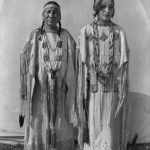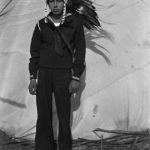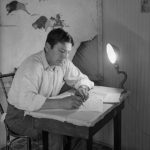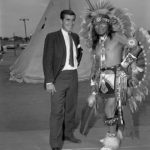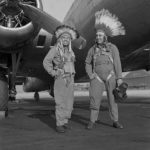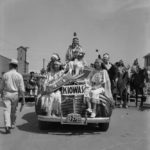Newly printed photos by Native American lensman Horace Poolaw offer rare views of Kiowa life in transition
“A Poolaw Photo, Pictures by an Indian, Horace M. Poolaw, Anadarko, Okla.”
That’s how Horace Poolaw (1906–84), a Kiowa from Caddo County, Oklahoma, stamped the photos of Indian life he sold at fairs and community events.
At a time when most images of Native Americans reflected white perceptions and stereotypes, Poolaw was saying, his photos were shot with an Indian gaze.
Poolaw was one of the first professional Native American photographers to document Indian society, creating a span of images from the 1920s to the ’50s that record vast changes in his community and his culture.
But he didn’t label his negatives, and didn’t print many of them. During his lifetime, his pictures were exhibited just once.
In 1989, his daughter Linda brought the negatives to a photo class at Stanford University, launching a process that lead to the Poolaw Photography Project at the University of Science and Arts of Oklahoma in Chickasha, where students scanned and digitized the archive.
Those efforts led to a trove of discoveries, as the community and scholars came together to identify the pictures and put them in context.
“For a Love of His People,” the exhibition at the New York’s National Museum of the American Indian (through February 15), features a fascinating array of photos Poolaw shot of his family and his multiracial community.
Documenting an era of shifting identities and traditions for Native Americans, he photographed them in at home, at church, at play (the Carnegie Indians baseball team, the Fort Sills Indians Football team), and at community events, from fairs and parades to military funerals.
My favorite picture shows the mother-and-daughter duo Sindy Libby Keahbone & Hannah Keahbone, both Kiowa. Poolaw photographed them in Oklahoma City around 1930.
Hannah was considered a rebel who defied social mores and wore makeup, and here she seems to be doing her best to inflect her tribal ensemble with Flapper chic. Note her subtle adjustment of the headband.
The gaze may be Indian, but the look on the young woman’s face is universal.

Just another WordPress site
